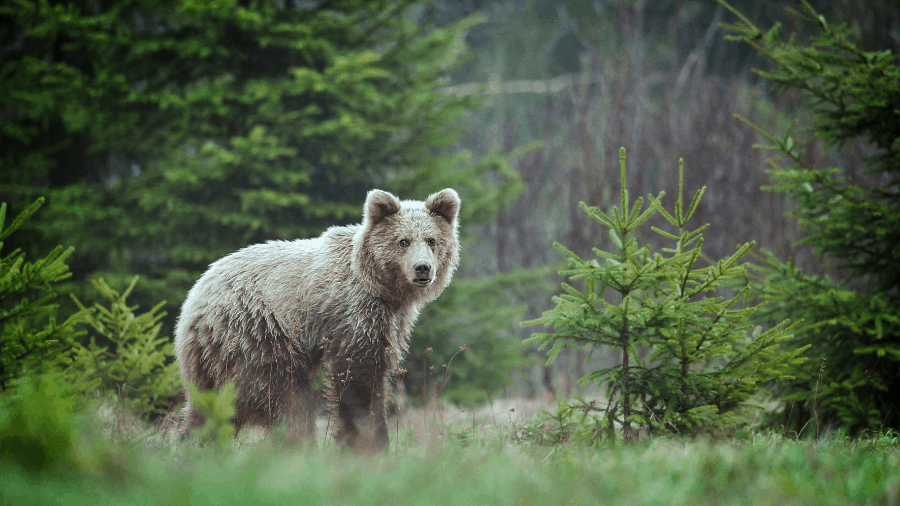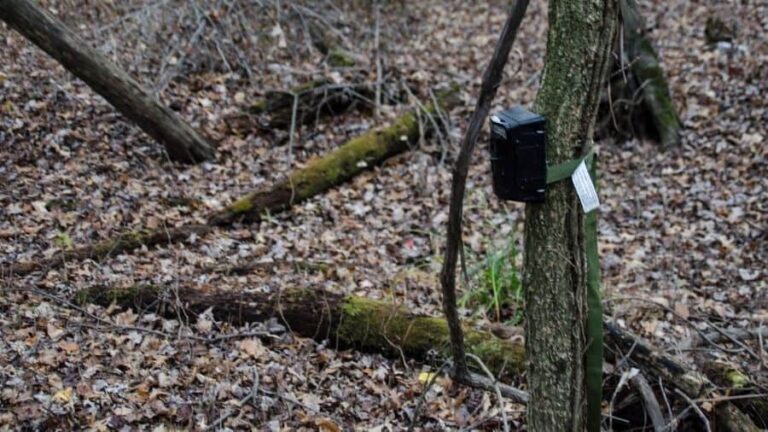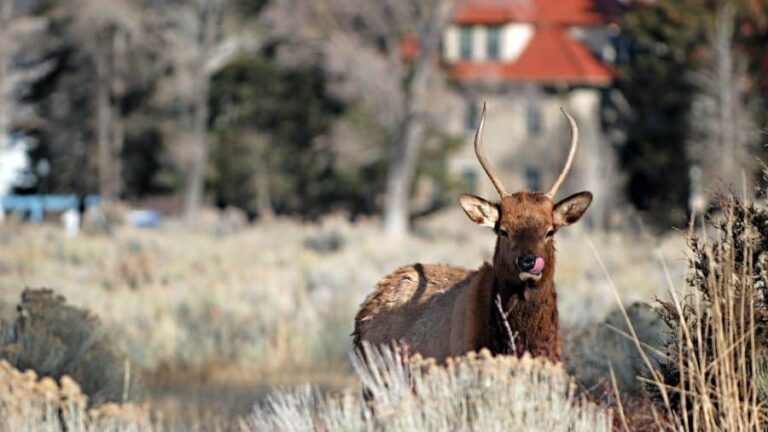How Do You Strap a Trail Camera to a Tree?
With the advancement of camera technology over the years, the use of trail cameras has become a popular way of securing your home and surveying your hunting grounds. The motion sensors of trail cameras detect movement and trigger the shutters which take pictures or record videos of targets. If you own a trail camera or you are planning to purchase one and you wish to learn how you can strap it to a tree, then we will show you.
You can wrap bungee cords around the tree and camera; you can use actual camera straps too. You can also build your own mounts. Whichever method you choose, the important thing is to make sure the camera is safe and has a clear field of vision.
Trail cameras can help to detect the movements of both humans and wildlife around a property. However, if you don’t strap your camera well, your trail camera could fall off and be damaged by animals, it could even be facing the wrong direction or even get stolen by thieves. This article provides useful information on how you can strap your trail camera. Read on!
Not all Trail Cameras come with a strap. Nevertheless, it can always be purchased. To strap your Trail Camera to tree, follow these steps:

Step 1: Find a Suitable Tree
Since your trail camera would most likely live in the woods for a while, a tree is a likely location. Find a suitable tree that provides adequate shade and light. Pick a height. The recommended height for trail cameras is waist-high. The reason for this is that trail cameras do not pivot, rotate or swivel. Additionally, a camera that is strapped to a tree at that height is going to catch the wildlife perfectly. Whatever you decide, be sure to test videos and pictures. There’s nothing worse than checking your footage weeks later only to be disappointed.
While placing a trail camera 20 feet high is pointless, strapping a camera waist-high has its own problems too. The first issue is a bear. Bears are curious animals and where they spot the camera on the tree, they may try to remove it, thereby damaging it in the process. To safeguard against this, make sure you use heavy-duty straps to attach your trail camera to the tree. The second issue with strapping trail camera’s waist-high on a tree is that it may get stolen easily. To safeguard against this, use a lock.
Step 2: Strap the Trail Camera
Strapping a trail camera to a tree is very easy. Run the strap through the opening on the back of the trail camera and fasten it around a tree. These are usually 8-feet long which is large enough for almost any tree. The issue with this is that it can be removed easily by you or any person that walks by, including thieves. This is why you should use locks to securely strap your trail camera. There are a lot of quality locks made of steel that make it difficult to steal the camera. The locks are usually camouflaged to avoid detection.
Other methods of thief-proofing your trail camera include:
- Go Covert: You can’t steal what you can’t see. This is perhaps the easiest way of safeguarding your trail cameras against thieves. There are three primary types of flashes used by trail cameras; an infrared, white flash, and black flash. Infrared and white flash cameras have lights that can be detected by anyone who happens to be close by when the camera takes a picture. Thus, it is best to go for trail cameras that use black flash as they are less likely to be detected.
- Place them high enough: When strapping or mounting your trail camera, do well to place them out of reach. This way you make it difficult for thieves to steal it as using a ladder is risky.
- Camouflage your Camera: It’s not that difficult to spot a black strap around a brownish trunk. You can use fake leaves to cover the camera straps.
However, trail camera mounts can be more effective than trail camera straps in some circumstances. For instance, camera mounts allow you to place your camera much higher than you can with a strap. They are also more firm compared to straps. The issue with trail camera mounts is that they can be very costly. Nevertheless, it is actually possible to create your own mount which is way cheaper. To mount your trail camera yourself, you would need the following:
- 1 7/8-inch eye screws.
- 1/4- inch eye bolts.
- 3/8-inch hex bolt.
- 3/8-16 Hex nut.
- 3/8 flat washers (you need 3 of these).
- ¼ inch wing nut.
To make your own camera mount, follow these steps:
Firstly, add the 3/8-inch washer to the very end of the hex bolt. Then put the hex bolt through the 1 7/8 eye screw and then add another washer to the hex bolt and another eye screw with the length of your choice depending on your situation. Add another washer to it and finally screw and tighten all of them with a hex bolt or a wing nut. You can also paint it with a green spray to camouflage it.
It should be noted that if you are putting the camera up high at an angle that increases the space between the tree and your trail camera, you can use an eye screw with a shorter length. If the tree you wish to mount the camera is leaning backward or if the mount is located at the bottom of the trail camera, you can use an eye screw with a longer length.
If you have enough money to spare for an extra measure, you can add another camera to face your trail camera to catch anybody that tries to steal it. You can also use a shorter eye screw to reduce the space between your camera and the tree.
Additionally, if you don’t want to screw it to the tree you can get a tie plate and an additional wing nut. Add the send washer through the first eye screw allowing the wings to thread backward then pass it through the front of the tie plate and add another washer to it. And add a hex nut to tighten it well. In order to tighten it to the tree, you will need a Paracord, after which you tie a loop around the bolt that is pointing to the tree. Make another loop close the first one and make sure it is a good knot like the trucker’s hitch then take the free end of the rope and tie it around the tree and loop the rope around the bolt then put that free end through the knot you made earlier.
Some Things to note when strapping/mounting a trail camera to a tree are:
- Update your device software before use: This is something most people are not aware of and often leads to frustration. Cameras contain software that allow the device to function properly and just like any other piece of technology, the software must be updated regularly to fix bugs and problems. To find out if there is a software update for your camera, visit your camera manufacture website.
- Place your camera south of your target area: This is also very important; and it essentially means that you should point your camera to the North. By pointing your camera towards the North, you can avoid sun glare which triggers the motion sensors of the camera. Make sure you have a compass with you when you want to hang your trail camera.
- Hang at the correct angle: This is something most people miss. Always hang your trail camera at a 45-degree angle to the trail. This would give the camera more trigger time, thereby giving you a better picture of the entire animal or human.
- Remove obstructions and confirm the position of the trail camera: For those that like bushes around their camera, be sure that you have a clear view of your trail. Also, be sure to clear away any foliage that could potentially block the lens or blow in the direction of the camera kicking off false motion photos. If not, the LED illumination would light up the bush in front of your camera. The effect of this is that it gives little or no exposure to the target.
- Use Decoys
If you have old trail cameras that aren’t working anymore, you could place them around to deter thieves.
After you have mounted your trail camera to the tree, make sure to tighten it well in order to hold the camera’s weight. Remember to also paint the tie plate with a light tan color if you used it. The only disadvantage of this method is the vulnerability of the trail camera to thieves this is because the camera isn’t lying directly on the tree like the strap method; so it can be spotted easily.
Check out a YouTube video to guide you on how to strap your trail camera to a tree.







